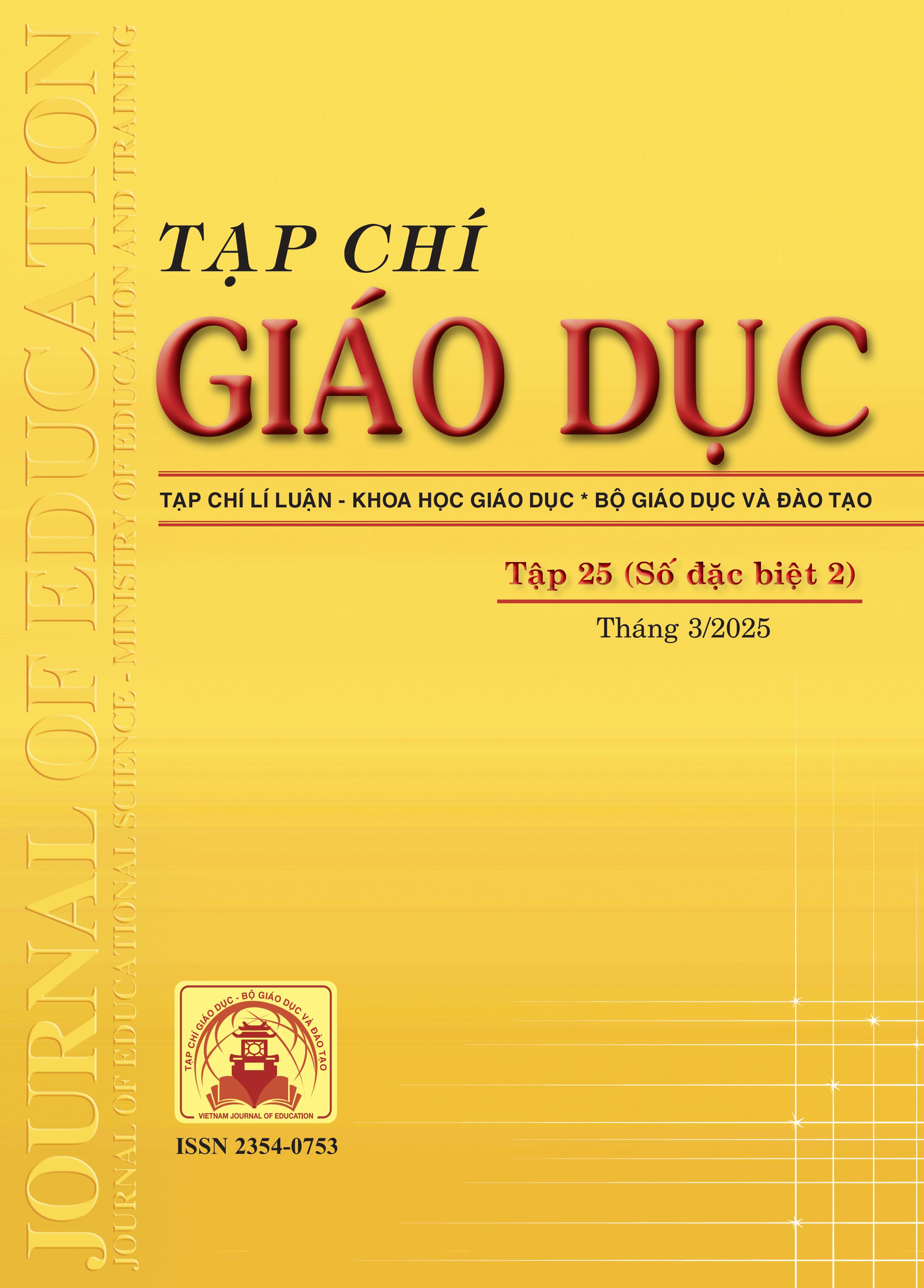Thiết kế tình huống dạy học nội dung “Tỉ số phần trăm” (Toán 6) nhằm giáo dục tài chính cho học sinh
Tóm tắt
The 2018 general education program for Mathematics focuses on application, linking mathematics with practice, and linking it with modern development trends in economics, science, social life, and urgent global issues (such as climate change, financial education, etc.). Financial education is implemented from grades 2 to 12 to provide students with an understanding of core financial knowledge. “Percentage” in the Grade 6 Mathematics program is a content with great potential for financial education, such as calculating interest rates when making savings deposits, calculating the amount to be paid when purchasing goods at increased and decreased prices, etc. The study proposes a process for designing teaching situations for Mathematics to educate students financially and illustrates this process in the design of teaching situations for the content “Percentage” (Math 6). When designing, we focus on practical contexts that have financial education significance. Through designed scenarios, students have the opportunity to apply their knowledge of percentages into practice while helping them understand more about real-life contexts related to finance and improve their financial literacy.
Tài liệu tham khảo
Bộ GD-ĐT (2018). Chương trình giáo dục phổ thông môn Toán (ban hành kèm Thông tư số 32/2018/TT-BGDDT ngày 26/12/2018 của Bộ trưởng Bộ GD-ĐT).
Child and Youth Finance International (CYFI) (2016). Training Course on: Fostering National Financial Education Strategies. Podgorica: CYFI and GIZ.
Hoa Ánh Tường, Phạm Sỹ Nam, Nguyễn Thị Bích Ngọc (2023). Tích hợp giáo dục tài chính trong dạy học chủ đề “Số thập phân” (Toán 6). Tạp chí Giáo dục, 23(13), 7-11.
Jayaraman, J. D., Saigeetha, J., & Kenneth, C. (2018). The connection between financial literacy and numeracy: A case study from India. Numeracy, 11(2).
Lê Văn Lực, Bùi Thị Hạnh Lâm, Nguyễn Danh Nam (2023). Khai thác tình huống tích hợp giáo dục tài chính trong dạy học môn Toán ở trường trung học phổ thông. Tạp chí Khoa học và Công nghệ - Đại học Thái Nguyên, 228(04), 155-164.
Lusardi, A., & Mitchell, O. S. (2014). The economic importance of financial literacy: Theory and evidence. Journal of Economic Literature, 52(1), 5-44. https://doi.org/10.1257/jel.52.1.5
Mandell, L. (2008). The financial literacy of young American adults. Results of the 2008 National Jump$tart Coalition Survey of High School Seniors and College Students.
Nguyễn Thị Nga, Phạm Trọng Mạnh (2023). Dạy học hàm số bậc nhất tích hợp giáo dục tài chính thông qua sử dụng phần mềm Microsoft Excel. Tạp chí Khoa học Giáo dục Việt Nam, 19(1), 35-39.
OECD (2013). Financial education for youth and in schools: OECD/INFE Policy Guidance. Challenges and Case.
OECD (2015). National Strategies for Financial Education.
OECD (2020). Recommendation of the Council on Financial Literacy.
Polya, G. (2011). Giải bài toán như thế nào? NXB Giáo dục Việt Nam.
Phạm Sỹ Nam (2020). Giáo dục tài chính thông qua dạy học hàm số trong nhà trường phổ thông. Tạp chí Giáo dục, 480, 21-24.
Tran, T. N. (2022). Integrating financial education in teaching mathematics in primary schools: Analysis from the orientation of the General Education Program 2018 and some examples” (in Vietnamese). Journal of Education, 22(5), 14-19.
Trịnh Thị Phan Lan (2018). Giáo dục tài chính cho trẻ em hướng tới phổ cập tài chính quốc gia. Tạp chí Khoa học và Đào tạo Ngân hàng, 191, 11-17.
Đã Xuất bản
Cách trích dẫn
Số
Chuyên mục
Giấy phép

Tác phẩm này được cấp phép theo Ghi nhận tác giả của Creative Commons Giấy phép quốc tế 4.0 .












